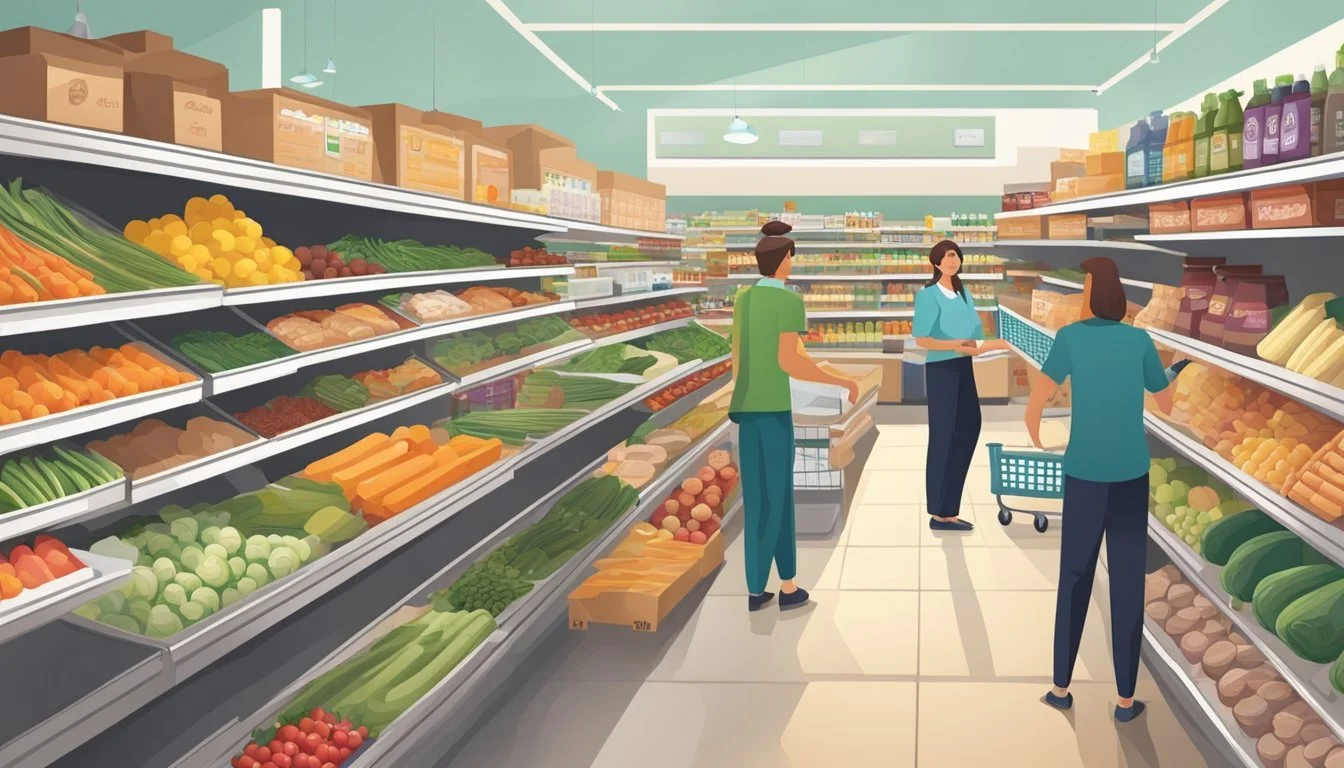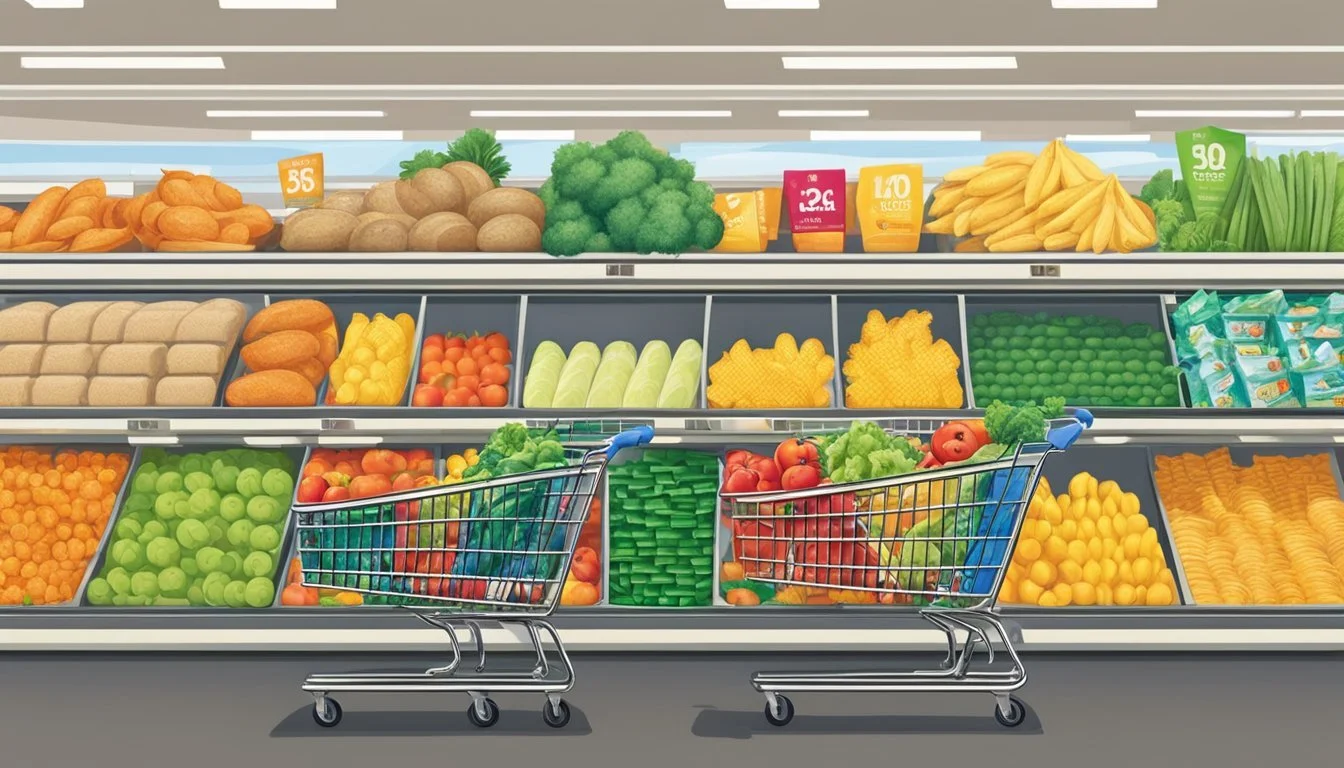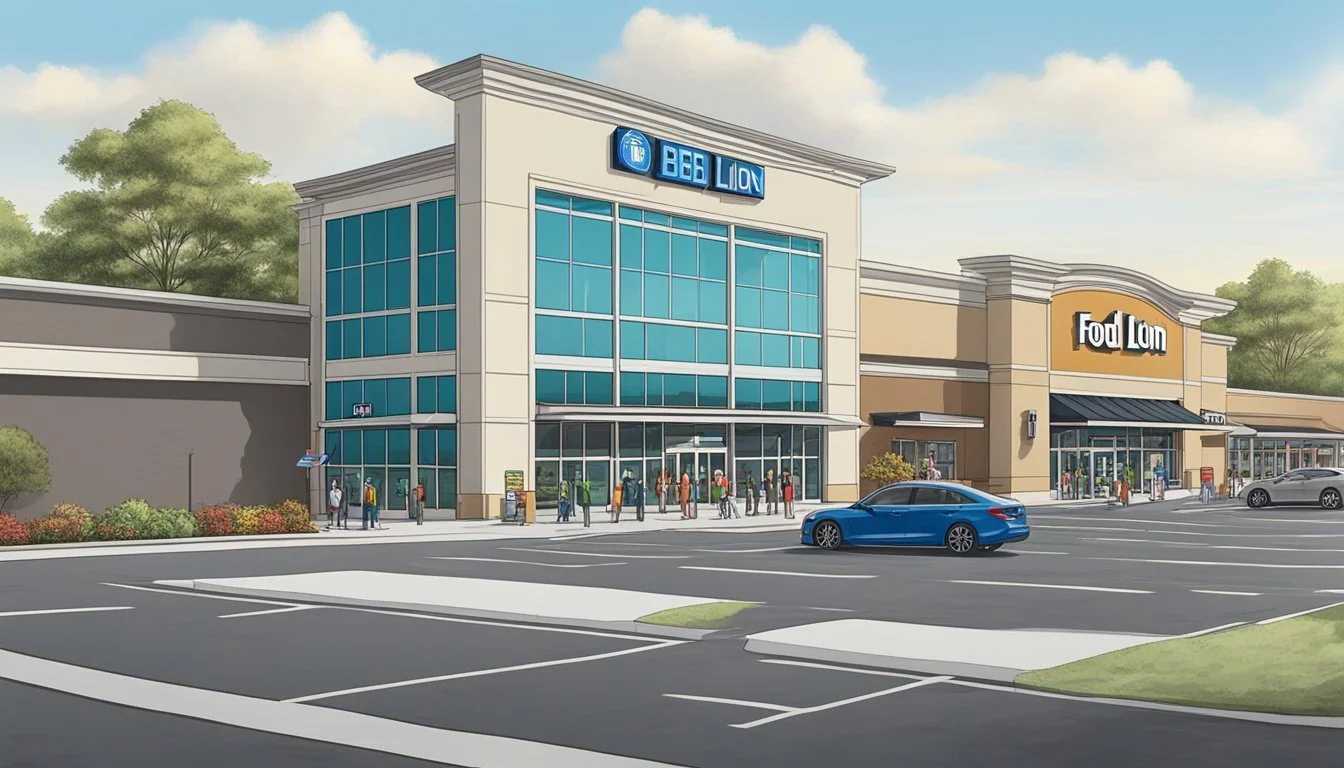Is Food Lion Cheaper Than H-E-B?
Comparing Grocery Prices at Two Popular Chains
Grocery shopping is a significant part of most households' budgets, making the choice of store crucial for those looking to save money. Food Lion and H-E-B are two popular grocery chains known for their competitive pricing strategies. While both stores aim to provide value to customers, their prices can vary depending on location and specific items.
On average, H-E-B tends to offer slightly lower prices compared to Food Lion, especially in Texas where H-E-B has a strong presence. H-E-B's efficiency in supply chain management and focus on private label products often allows them to keep costs down. However, Food Lion remains a strong competitor, frequently offering promotional deals and discounts that can result in substantial savings for savvy shoppers.
The shopping experience at these stores also differs, which can impact overall value. H-E-B stores are typically larger and offer a wider variety of products, while Food Lion focuses on providing convenience with more numerous, smaller locations. Customers may find that the best choice between these two retailers depends on their specific needs, shopping habits, and proximity to each store.
Comparative Price Analysis
Food Lion and H-E-B employ distinct pricing strategies to attract customers. Their approaches to competitive pricing, store brands, and promotional offers impact overall value for shoppers.
Overview of Pricing Strategies
Food Lion focuses on everyday low prices across its product range. The chain emphasizes consistent affordability rather than frequent deep discounts. H-E-B takes a more dynamic approach, offering competitive prices on staple items while featuring rotating deals on specialty products.
Food Lion's strategy aims to build customer trust through price stability. H-E-B's method encourages regular store visits to catch limited-time offers. Both chains invest in their store brands to provide budget-friendly alternatives to national brands.
Specific Item Price Comparison
A basket comparison of common grocery items reveals nuanced price differences between Food Lion and H-E-B:
Item Food Lion H-E-B Milk (1 gallon) $3.29 $3.18 Eggs (dozen) $2.99 $2.88 Bread (loaf) $2.49 $2.38 Bananas (per lb) $0.59 $0.52
H-E-B shows slightly lower prices on these staple items. However, price gaps vary across different product categories and can fluctuate based on local market conditions and supply chain factors.
Bulk Items and Store Brands
Both chains offer bulk purchasing options, but H-E-B's larger store formats typically provide a wider selection. H-E-B's "Meal Simple" prepared foods and extensive store brand lineup compete directly with name brands on quality and price.
Food Lion's "Nature's Promise" and "Taste of Inspirations" store brands offer value alternatives across various categories. While H-E-B's store brands often receive high marks for quality, Food Lion's options still present significant savings compared to national brands.
Promotional Offers and Discounts
Food Lion's MVP Card program provides personalized deals and gas rewards. The chain's weekly circular highlights temporary price cuts and BOGOs (Buy One, Get One) offers. Digital coupons integrated into the MVP program offer additional savings.
H-E-B runs "Combo Loco" deals, combining related items for a discounted price. The chain's digital coupons and app-exclusive offers attract tech-savvy shoppers. H-E-B Plus! locations feature expanded non-grocery departments with competitive pricing on electronics and housewares.
Both chains use seasonal promotions tied to holidays and events to drive traffic and boost sales of specific product categories.
Quality and Variety of Goods
Food Lion and H-E-B offer different selections of products, each with its own strengths in quality and variety. Their offerings span fresh produce, meats, organic options, and store-brand alternatives to national brands.
Fresh Produce and Meat Quality
Food Lion provides a decent selection of fresh produce and meats. Their fruits and vegetables are generally of good quality, though the variety may be more limited compared to larger chains. The meat department offers standard cuts and options.
H-E-B, on the other hand, is known for its extensive produce section. They often stock a wider range of fruits and vegetables, including some locally-sourced options. H-E-B's meat department is particularly praised for its quality and variety, featuring prime cuts and specialty meats.
Both stores maintain freshness standards, but H-E-B tends to edge out in terms of overall quality and selection in these departments.
Organic and Specialty Products
Food Lion has increased its organic offerings in recent years. They stock organic produce and pantry staples, catering to health-conscious shoppers. Their specialty product selection is modest but covers basic international and gourmet items.
H-E-B excels in this area with a robust organic section. They offer a wide range of organic produce, meats, and packaged goods. H-E-B also boasts an impressive array of specialty products, including international foods, artisanal cheeses, and gourmet items.
For shoppers seeking organic options or unique specialty products, H-E-B typically provides a more extensive selection.
Store Brand versus National Brands
Food Lion's store brand, "My Essentials," offers budget-friendly alternatives to national brands across various product categories. These items are generally of good quality and provide cost savings.
H-E-B's private-label products, including the "H-E-B" brand and "Hill Country Fare," are highly regarded. They often match or exceed the quality of national brands while maintaining competitive prices.
Both stores stock popular national brands, ensuring shoppers have access to familiar products. However, H-E-B's store brands tend to receive more praise for their quality and value, often rivaling national brands in taste and performance.
Customer Shopping Experience
The shopping experience at Food Lion and H-E-B differs in several key areas. These include store layout, customer service, loyalty programs, and accessibility factors.
Store Layout and Convenience
Food Lion stores typically feature a clean, well-organized layout. Aisles are clearly marked, making it easy for customers to find what they need. The stores are often brightly lit, creating a welcoming atmosphere.
H-E-B, on the other hand, is known for its spacious stores with wide aisles. Many H-E-B locations offer an extensive selection of products, including a large produce section and in-store bakeries. This can provide a more comprehensive shopping experience.
Both chains prioritize convenience, with Food Lion focusing on quick trips and H-E-B catering to both quick shoppers and those looking for a broader selection.
Customer Service and Loyalty Programs
Food Lion emphasizes friendly customer service. Staff members are often available to assist shoppers with questions or help locate items. The chain's MVP Card program offers discounts and personalized deals to frequent shoppers.
H-E-B is renowned for its exceptional customer service. The company invests heavily in employee training, resulting in knowledgeable and helpful staff. H-E-B's loyalty program includes digital coupons and points that can be redeemed for discounts on future purchases.
Both stores strive to build customer loyalty through these programs and attentive service.
Accessibility and Location Factors
Food Lion has a strong presence in the southeastern United States, with many stores located in smaller towns and rural areas. This makes them accessible to a wide range of customers, including those in less populated regions.
H-E-B's stores are primarily concentrated in Texas. While this limits their accessibility outside the state, it allows them to tailor their offerings to local tastes and preferences. H-E-B stores are often larger and may require a longer drive for some customers.
Location can significantly impact the shopping experience, with proximity and convenience playing crucial roles in store choice for many consumers.
Regional Market Presence
H-E-B and Food Lion operate in distinct geographical areas, each carving out a strong presence in their respective regions. Their market dominance reflects local consumer preferences and strategic expansion efforts.
H-E-B's Dominance in Texas
H-E-B reigns supreme in the Lone Star State. The San Antonio-based grocer operates over 340 stores across Texas, capturing a significant market share. H-E-B's popularity stems from its deep-rooted Texas heritage and tailored product offerings.
The chain enjoys a cult-like following among Texans, with stores often becoming community hubs. H-E-B's regional pride is evident in its "Totally Texas" product line and partnerships with local suppliers.
In 2022, H-E-B saw increased foot traffic compared to previous years, solidifying its position as Texas' preferred grocer. The company's success is attributed to its reputation as both a retailer and employer.
Food Lion's Presence in Southeast and Mid-Atlantic
Food Lion maintains a strong foothold in the Southeast and Mid-Atlantic regions. With over 1,000 stores across 10 states, the chain has established itself as a familiar name for shoppers in these areas.
The grocer's market share has grown steadily in recent years. In North Carolina, Food Lion's share of grocery visits increased from 36.9% in 2019 to 41.3% in 2022.
Food Lion's expansion strategy focuses on renovating existing stores and opening new locations in its core markets. This approach has helped the chain strengthen its presence in states like Virginia, North Carolina, and South Carolina.
The company's commitment to competitive pricing and community involvement has contributed to its growing popularity in the Southeast and Mid-Atlantic regions.
Comparison with Other Retailers
Food Lion and H-E-B face competition from various national chains and online retailers. Their pricing strategies and value propositions differ when compared to major players in the grocery industry.
Food Lion and H-E-B vs National Chains
Food Lion and H-E-B compete with national chains like Kroger, Publix, and Target. Food Lion focuses on offering budget-friendly options, while H-E-B leverages its strong regional presence in Texas. Kroger's extensive private label selection and fuel rewards program attract cost-conscious shoppers. Publix emphasizes customer service and fresh produce. Target integrates groceries with general merchandise, appealing to one-stop shoppers.
Price comparisons vary by region and product category. Food Lion often matches or beats national chain prices on staple items. H-E-B's pricing is competitive in its markets, frequently undercutting national chains on popular products.
How Do Aldi, Walmart, and Costco Compare?
Aldi, Walmart, and Costco present unique value propositions:
Aldi: Limited selection, no-frills stores, low prices
Walmart: Everyday low prices, wide selection, one-stop shopping
Costco: Bulk purchases, members-only, competitive pricing
A CBS News report found Walmart offered the lowest prices on a sample grocery basket compared to other major chains. Aldi's streamlined operations allow for consistently low prices on staple items. Costco's bulk pricing model appeals to large families and small businesses.
Food Lion and H-E-B must differentiate through regional offerings, customer service, and targeted promotions to compete with these value-focused retailers.
The Impact of Online Retailers like Amazon
Online retailers, particularly Amazon, have disrupted the grocery landscape. Amazon's acquisition of Whole Foods and expansion of Amazon Fresh have increased price competition. Their convenience and wide product selection challenge traditional grocers.
Food Lion and H-E-B have responded by enhancing their e-commerce capabilities. Both offer online ordering and pickup services. H-E-B has invested in its own delivery service in Texas.
Traditional grocers like Food Lion and H-E-B maintain an advantage in fresh produce and meat, where customers often prefer in-person selection. They also leverage their physical stores for rapid order fulfillment, competing with Amazon's delivery times in local markets.
Analysis of Consumer Trends
Consumer trends in grocery shopping reveal shifts towards cost-effective options and personalized experiences. Shoppers increasingly prioritize value while seeking stores that cater to their preferences and needs.
Budget-Friendly Shopping Habits
Price-conscious consumers are actively seeking ways to stretch their grocery budgets. Many shoppers compare prices across different stores, with H-E-B and Food Lion being popular choices for budget-friendly options.
H-E-B has seen significant growth in consumer transactions, with average transaction values increasing by 12% between July 2021 and July 2022. This trend suggests that shoppers are finding value in H-E-B's offerings.
Consumers are also gravitating towards stores that offer cost-cutting strategies. Some retailers, like Woodman's, keep prices low by buying directly from manufacturers and limiting accepted payment methods.
Customer-Centric Shopping Decisions
Shoppers are increasingly making decisions based on personalized experiences and regional preferences. H-E-B's strong market presence in Texas, for example, demonstrates the impact of tailoring offerings to local tastes.
Regional factors play a significant role in pricing strategies. H-E-B's success in Texas, even against national chains, highlights the importance of understanding local consumer needs.
Stores that adapt to customer preferences often see increased loyalty. H-E-B's ability to maintain a 23.4% market share in Houston, slightly ahead of Walmart, indicates strong customer satisfaction.
Purchasing Patterns and Retail Strategies
Grocery chains are adapting their strategies to meet changing consumer demands. Bulk buying and warehouse-style stores are gaining popularity among budget-conscious shoppers.
Retailers are focusing on promotions and loyalty programs to attract and retain customers. These strategies can significantly impact consumer spending patterns and store choice.
Data shows that Ahold Delhaize, Aldi, and H-E-B experienced the largest year-over-year increases in sales in July 2022. This trend suggests that consumers are favoring retailers with diverse offerings and competitive pricing.
Store layout and product placement are crucial factors in influencing purchasing decisions. Retailers are optimizing their spaces to encourage impulse buys and increase average transaction values.
Food Lion and H-E-B in the Broader Economic Context
Economic trends, supplier relationships, and future market conditions shape the pricing strategies of Food Lion and H-E-B. These factors influence how the two grocery chains position themselves in a competitive retail landscape.
Economic Factors Influencing Grocery Prices
Inflation plays a significant role in grocery pricing. In recent years, food prices have risen due to increased production and transportation costs. This impacts both Food Lion and H-E-B's pricing strategies.
Supply chain disruptions can cause price fluctuations. When shortages occur, grocery stores may need to adjust prices accordingly.
Consumer spending habits also affect pricing. During economic downturns, shoppers tend to be more price-sensitive, prompting stores to offer more competitive deals.
Regional economic differences influence prices. H-E-B, primarily based in Texas, may face different economic pressures than Food Lion, which operates in multiple states.
Supplier Relationships and Their Impact
Strong supplier relationships can lead to better pricing for grocery chains. H-E-B is known for its partnerships with local Texas producers, potentially allowing for more competitive pricing on certain items.
Food Lion, as part of the larger Ahold Delhaize group, may benefit from economies of scale in its supplier negotiations.
Both chains likely use private label products to offer lower-priced alternatives to national brands. This strategy helps them compete on price while maintaining profit margins.
Seasonal produce agreements with farmers can affect pricing throughout the year. Stores may offer better deals on fruits and vegetables during peak harvest times.
Future Outlook for Grocery Store Pricing
Technological advancements may impact future pricing strategies. Both Food Lion and H-E-B are investing in digital platforms and data analytics to optimize pricing.
Increased competition from online retailers and discount chains could pressure both stores to keep prices low.
Changing consumer preferences towards organic and locally-sourced products may influence pricing structures. Stores may need to balance higher-cost specialty items with value-priced staples.
Economic forecasts suggest continued inflationary pressures in the near term. This may challenge both chains to maintain competitive pricing while preserving profit margins.
Sustainability initiatives could affect future pricing. As both chains invest in eco-friendly practices, these costs may be reflected in product prices.







